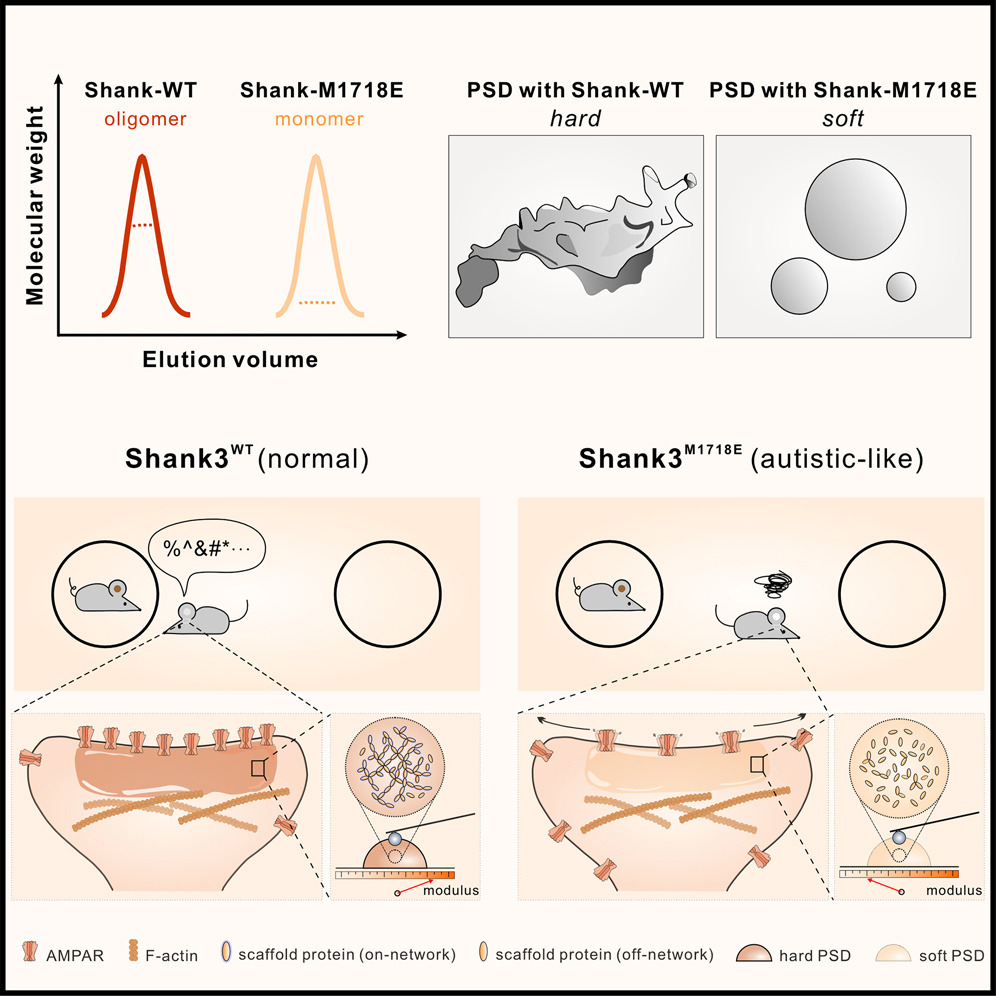Site-specific phosphorylation of PSD-95 dynamically regulates the postsynaptic density as observed by phase separation
2021.11.19Vistrup-Parry, M., Chen, X., Johansen, T.L., Bach, S., Buch-Larsen, S.C., Bartling, C.R.O., Ma, C., Clemmensen, L.S., Nielsen, M.L., Zhang, M, and Strømgaard, K. (2021) iScience 24, 103268.
Postsynaptic density protein 95 is a key scaffolding protein in the postsynaptic density of excitatory glutamatergic neurons, organizing signaling complexes primarily via its three PSD-95/Discs-large/Zona occludens domains. PSD-95 is regulated by phosphorylation, but technical challenges have limited studies of the molecular details. Here, we genetically introduced site-specific phosphorylations in single, tandem, and full-length PSD-95 and generated a total of 11 phosphorylated protein variants. We examined how these phosphorylations affected binding to known interaction partners and the impact on phase separation of PSD-95 complexes and identified two new phosphorylation sites with opposing effects. Phosphorylation of Ser78 inhibited phase separation with the glutamate receptor subunit GluN2B and the auxiliary protein stargazin, whereas phosphorylation of Ser116 induced phase separation with stargazin only. Thus, by genetically introducing phosphoserine site-specifically and exploring the impact on phase separation, we have provided new insights into the regulation of PSD-95 by phosphorylation and the dynamics of the PSD.
- Recommend
-
2025-10-22
IQSEC2/BRAG1 may modulate postsynaptic density assembly through Ca2+-induced phase separation.
-
2025-08-22

Shank3 oligomerization governs material properties of the postsynaptic density condensate and synaptic plasticity.
-
2025-08-21
Modulating synaptic glutamate receptors by targeting network nodes of the postsynaptic density condensate.
-
2025-08-19
Current practices in the study of biomolecular condensates: a community comment.
-
2025-06-10
Phase separation instead of binding strength determines target specificities of MAGUKs.

